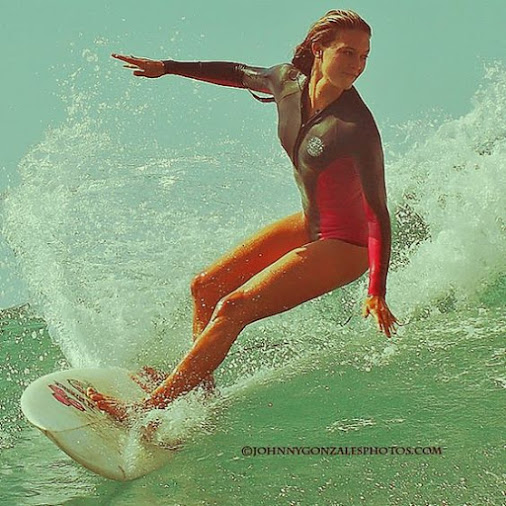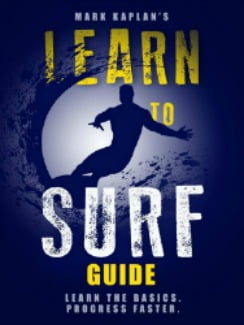Catching real waves on a soft top surf board comes after mastering the fundamentals on foam waves. Each step of progress is important and never wasted because they all add up to being an advanced surfer.
Beginner surfers learn best if they begin on a big board like a 9′ soft top board. After my students have mastered the pop up and can land in the right position on the surf board, I move them to an 8′ soft top. At this point they are paddling out to catch waves and are ready to start working on real waves.

Catching Real Waves
The first difference in catching real waves is the timing. The real wave arcs and the surfer has to let the real wave come under the board as it arcs. Then the surfer paddles hard three times down the face and pops up.
An easy way to start on real waves is catching them at the corner. The corner is away from where the wave begins its break called the apex. As it rolls, it is slower and not as steep on most beaches.
The surfer paddles parallel to the wave and at a 45 degree angle towards the beach. As the wave rolls under the board, the surfer then paddles hard and does a pop up. The board is still pointed at 45 degrees toward the beach instead of straight down when catching it on the face.
The Bottom Turn
The surfer wants to ride in the pocket on a real wave. A good way to get into the pocket is to turn the board towards the pocket after catching it but before popping up. This happens instead of executing a bottom turn at the bottom of a real wave to get into the pocket.
The bottom turn is executed by the surfer turning his upper body toward the direction of the turn and placing a little pressure on the toes or heels, whichever is closest to the direction he is turning. The bottom turn is also used to escape over the top of a closing out wave or to begin the ripping the lip maneuver.
The next maneuver a surf learns is the cut back. This is reversing direction to get back to the power or for style. The surfer is going to reverse his direction. He turns his upper body toward the beach and applies pressure on the toes or heels, whichever is closest to the beach and away from the face of the wave.
All these maneuvers can be performed well on a soft top and should be learned before moving to shorter hard boards.
Learn More
My New Surfing Course in an E-Book plus Demo Video or Audio Version
Get the 18 Chapter, 7,500 word Course that can prepare you for a lesson or give you the fundamentals if you are going to try it on your own. 10 years of teaching 350 students a year has given me the insights on the most precise measures you must follow for success. This course is what I teach on the dry land and in water instruction. The Course includes a 15 minute video on my dry land and in water demonstration. Only $4.95
Buy the E-Book and start learning $2.99. Learn to Surf
Buy the Paperback on Amazon $7.95
Get Learn to Surf Course in 29 minute AUDIO. Great prep for a lesson, reviewing after a lesson, learning on your own, refreshing after not having surfed for a while. See Table of Contents. Only $7.95.

For Oceanside Surf Lessons, see the Home Page
See the Post Search Lessons Teach Fundamentals
See the Post Catching Real Surf Waves
See my Dry Land and in Water Demo video
See my other Surf site for more Posts
I have lowered the price of Courses and Books for the lock down price of $2.99
80 page Learn to Surf Book
![Surf Instructions Beginner to Advanced: Learn to Ride Waves by [Kaplan, Mark]](https://images-na.ssl-images-amazon.com/images/I/51HswFtoBQL.jpg)